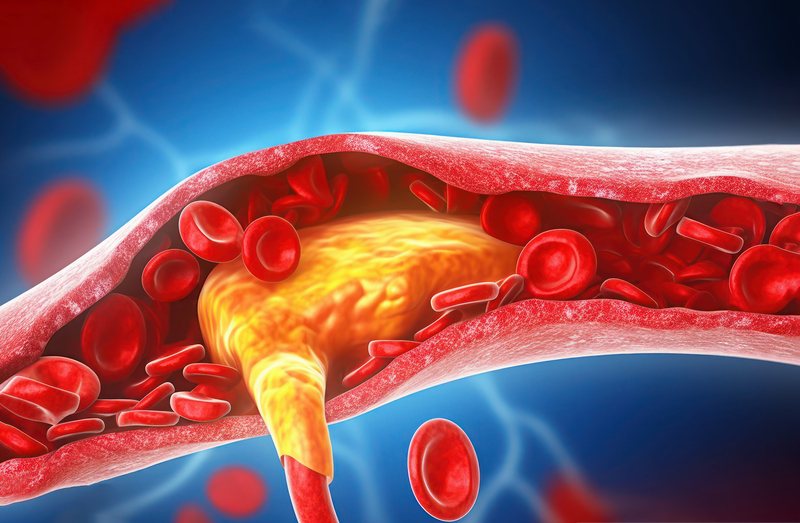APPLICATION OF DEEP OSCILLATION THERAPY IN THE TREATMENT OF PERIPHERAL ARTERIAL DISEASES
Trybulski R, Biolik G, Kuczmik W, Ivasyk N, Tyravska O. Application of deep oscillation therapy in the treatment of peripheral arterial diseases. Med. perspekt. [Internet]. 2023Sep.29 [cited 2023Nov.6];28(3):116-27. Available from: https://journals.uran.ua/index.php/2307-0404/article/view/289207

Visual representation of a blocked blood vessel due to the accumulation of arterial plaque
Intermittent claudication is a common symptom of peripheral arterial disease, affecting up to 50% of patients over the age of 50, which is characterized by pain, discomfort, and cramping in the leg muscles during physical activity. Intermittent claudication is a common symptom of lower extremity arterial disease (LEAD), which significantly impacts patients’ quality of life and drives healthcare costs. Current treatments for intermittent claudication are often inadequate, leading to a need for more effective treatments. Developing new treatments is critical to improve outcomes for patients and address the public health implications of LEAD.
This study’s aim was to present the impact of comprehensive physiotherapy, conducted independently, with the supervision of a physiotherapist, for 14 weeks, on a patient with intermittent claudication caused by peripheral arterial disease. The therapy included bicycle training in a form of physical therapy at home, combined with deep oscillation therapy. Deep oscillation therapy involved the use of an electrostatic field with a frequency of 5 to 250 Hz. The field was applied following the lymphatic drainage methodology.
In the discussed case, a statistically significant and favourable increase in the measured variables was observed, such as the increase of bone-brachial index from 0.65 to 0.8, the increase of tissue perfusion, measured by laser Doppler flowmetry, from 12.3% to 61%, depending on the measurement site, and the increase in pain-free walking distance by 451%. TcPO2 measurement in the affected leg increased from 31 to 48 mmHg.
The use of physical therapy at home combined with deep oscillation showed improvements in pain-free walking distance, Ankle Brachial Index, and other measures in patients with peripheral arterial disease. Deep oscillation therapy demonstrated potential analgesic effects but also raised concerns about possible nerve damage. The study indicated that physical therapy at home might serve as an alternative to supervised exercise therapy, but it had limitations like a small sample size and lack of direct comparisons.

